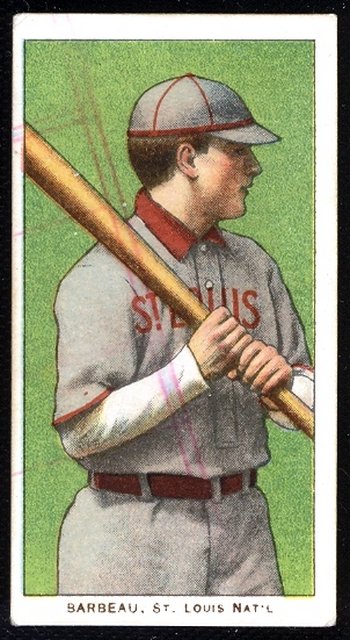Quote:
Originally Posted by FrankWakefield

You two ever soak a white border card in gasoline, or kerosene?
|
Actually, I can speak to that. Some years ago I purchased a small collection of original find T cards. One of them was a T202 w/Cobb that had been dipped in oil/gas/kerosene or whatever by the original card owner--definitely a petrochemical. The card was dark brown with oil and felt slick. The inks were not affected in the slightest.
I decided to clean the card because it was ruined anyway. I checked with a conservation expert and was told that a 90 year old oil stain would never fully release but that repeated baths in bestine [an artists' solvent used to remove oil-based materials like rubber cement or paint] would remove as much of the oil as could be removed. I bought a can of the stuff and put the card through repeated soaks in it until the fluid was clear, meaning no more oil to leach out of the card. I then dried the card.
The soaks, or perhaps the effect of the oil over the decades, turned the white cardboard grayish. It was obvious and plain to see. The inks themselves on the card were not affected at all. I've encountered other cards from the T era with similar discolorations at shows and I know that they were dipped and stripped, so to speak. Anyone who has any experience with T cards could never mistake them for anything remotely close to factory released condition. I sold the card--with full disclosure--to a budget-conscious collector who was pleased to get a T202 Cobb at a fraction of the price of a nice one.
Now, I have no doubt that a real nasty industrial solvent or bleach could remove colored printing from a card, but the damage would be profound and obvious, and would not lend itself to the sort of clean reversed images we see. What we are discussing is adding something to the card, not destroying original inks. Very different and much tougher to add something than to destroy something. I have examined thousands of white bordered T cards and many transfer-type cards--I've been actively searching for them for years--and I have never seen any transfer that appeared to be from other than an original printing. Perhaps transfers are one reason why modern printed materials like cards have a clear coat applied to the paper after the last of the inks--if you soak a modern card you will see that it curls, which is due to the coating not releasing like the uncoated card backs do.
As for the prevalence, I see lots of Tolstoi, relatively speaking, with back transfers to the card fronts. Had to be something with the original ink used. I'm still trying to figure out WTF transferred to this card:
